Discover the Ten Primordial Gurus of the Bhavasagara: Guiding Lights in the Ocean of Illusion
- July 12, 2025
- no comments
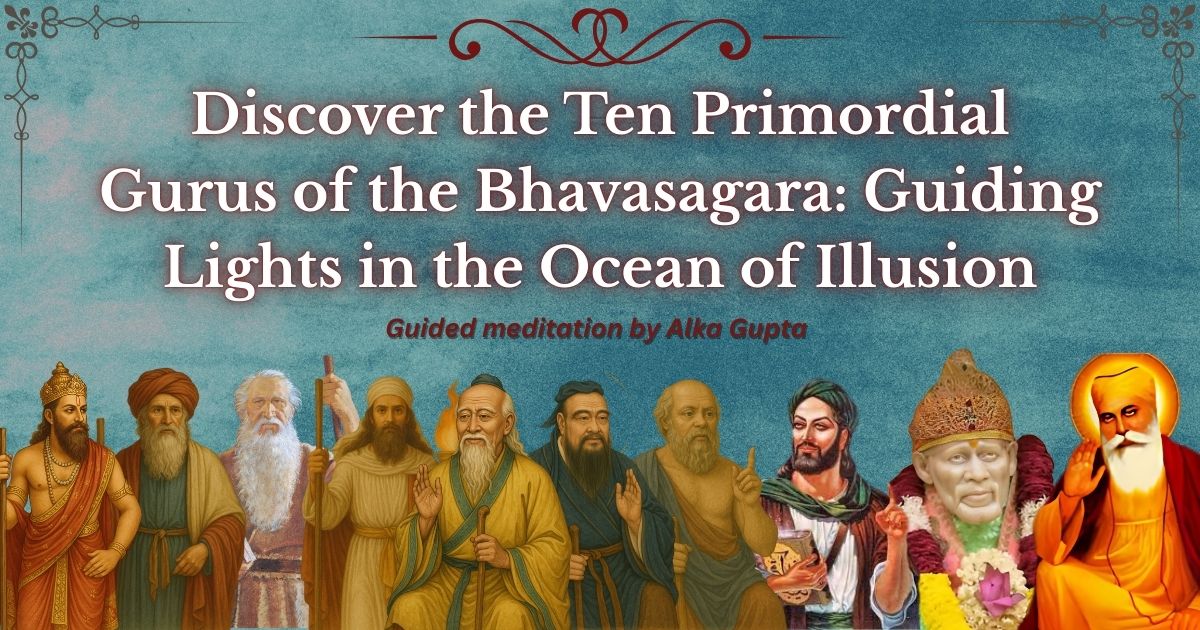
Why These Gurus Reside in the Bhavasagara
Bhavasagara, the “ocean of illusion,” represents the realm of ego, conditioning, doubt, and imbalance. To help seekers cross this turbulent sea, ten Primordial Gurus have been divinely placed as pillars of the Guru Tattwa. Each one manifests a vital aspect of spiritual evolution:
- Faith (Shri Abraham, Shri Mohammed Sahib)
- Moral Conduct (Shri Moses, Shri Confucius)
- Surrender (Shri Lao Tze, Shri Sai Baba)
- Discrimination & Detachment (Shri Janaka, Shri Zarathustra)
- Truth-Seeking (Shri Socrates, Shri Guru Nanak Dev Ji)
Their collective wisdom forms a bridge toward Self-realization, preparing the world to recognize the Adi Guru Herself — Shri Mataji Nirmala Devi.
? Shri Raja Janaka – The Realized King of Detachment
Era: Treta Yuga | Region: Ancient India | Title: Father of Shri Sita and Rajarshi
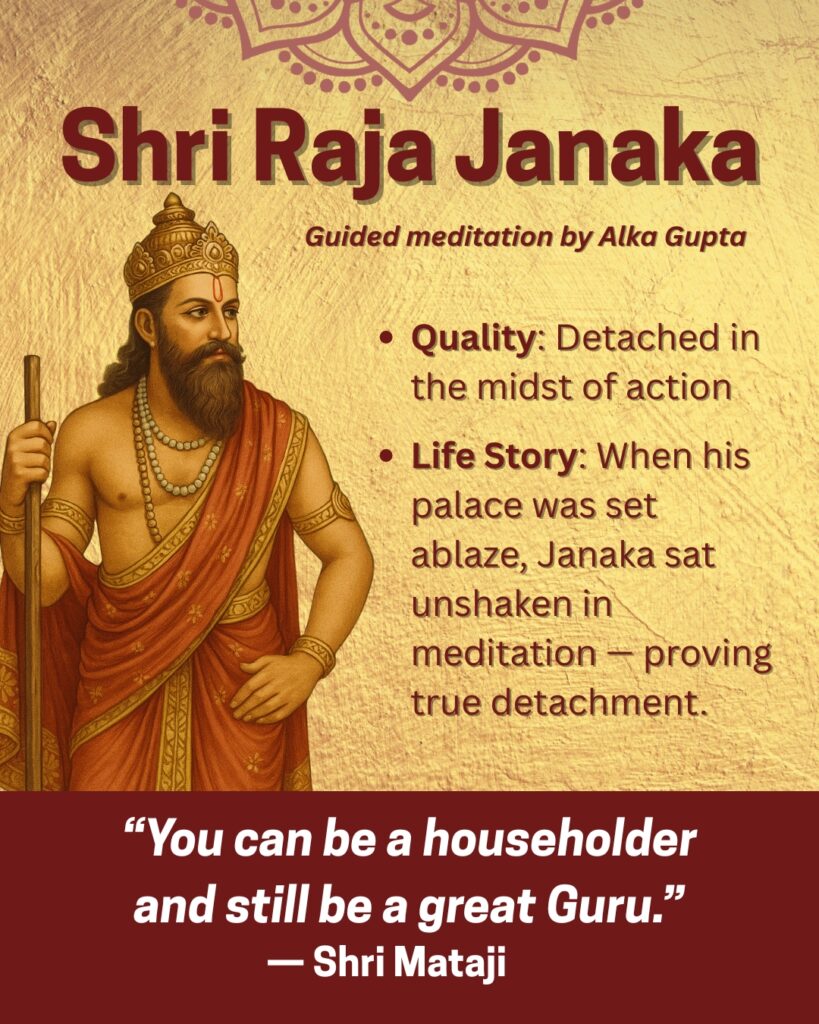
Shri Janaka was the embodiment of detachment while ruling a kingdom. In a famous encounter with the young sage Ashtavakra, he demonstrated that true renunciation lies not in leaving the world, but in not being bound by it.
Key Story: Ashtavakra set the palace on fire during a spiritual test. While others panicked, Janaka remained absorbed in meditation, declaring, “Nothing belongs to me. I came to seek Truth, not to save gold or grain.”
Shri Mataji said:
“Raja Janaka was a king and still a Guru, because nothing clung to him… That is real detachment.” — Guru Puja Talk
Qualities to Imbibe:
- Balance in action and meditation
- Discrimination (Viveka)
- Surrender to the Guru
- Inner authority over outer roles
? Shri Abraham – The Father of Faith
Era: Mesopotamia → Canaan | Religion: Judaism, Christianity, Islam
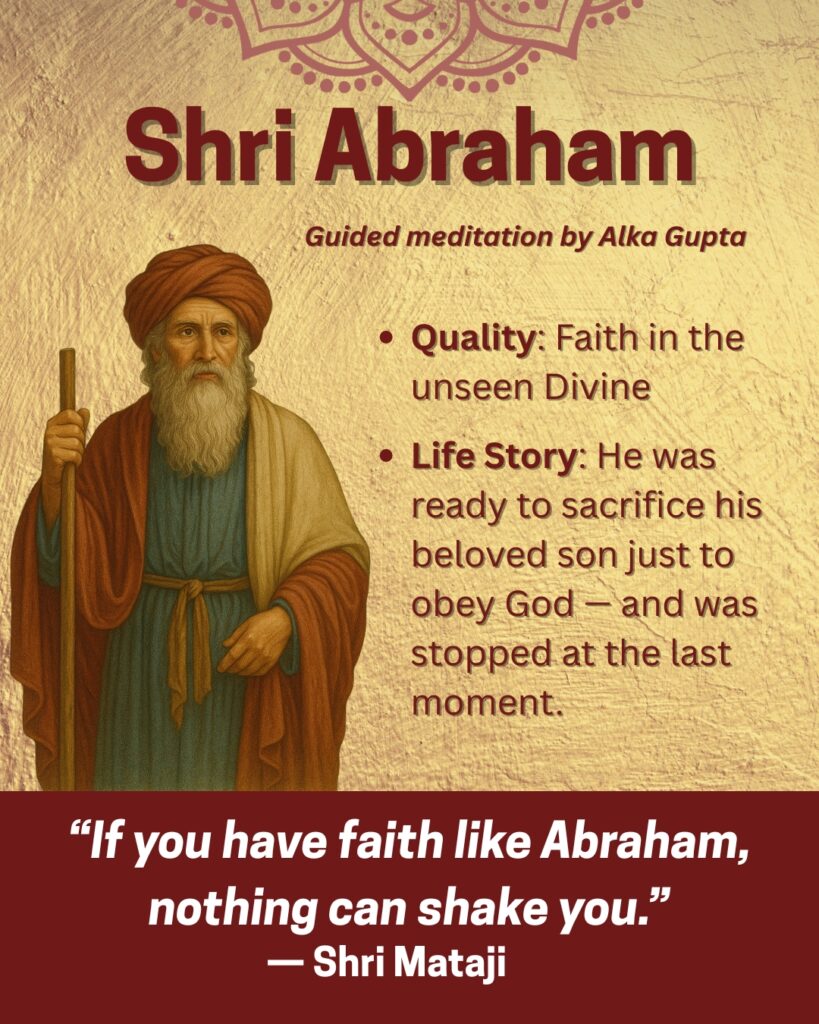
Shri Abraham is revered for his unwavering obedience to Divine Will, even before Self-realization. His legacy began monotheism in an age dominated by idol worship.
Story of Sacrifice: God asked Abraham to sacrifice his son Isaac. At the moment of surrender, God stopped him — proving his detachment and faith.
Shri Mataji said:
“Abraham stood for the principle of faith in the unseen… That kind of faith is essential to cross Bhavasagara.”
Spiritual Lessons:
- Obedience to vibrations
- Faith in Divine purpose
- Detachment from emotional bondage
- Courage to walk alone for truth
? Shri Moses – The Lawgiver of Dharma
Era: Ancient Egypt | Role: Prophet, liberator, lawgiver
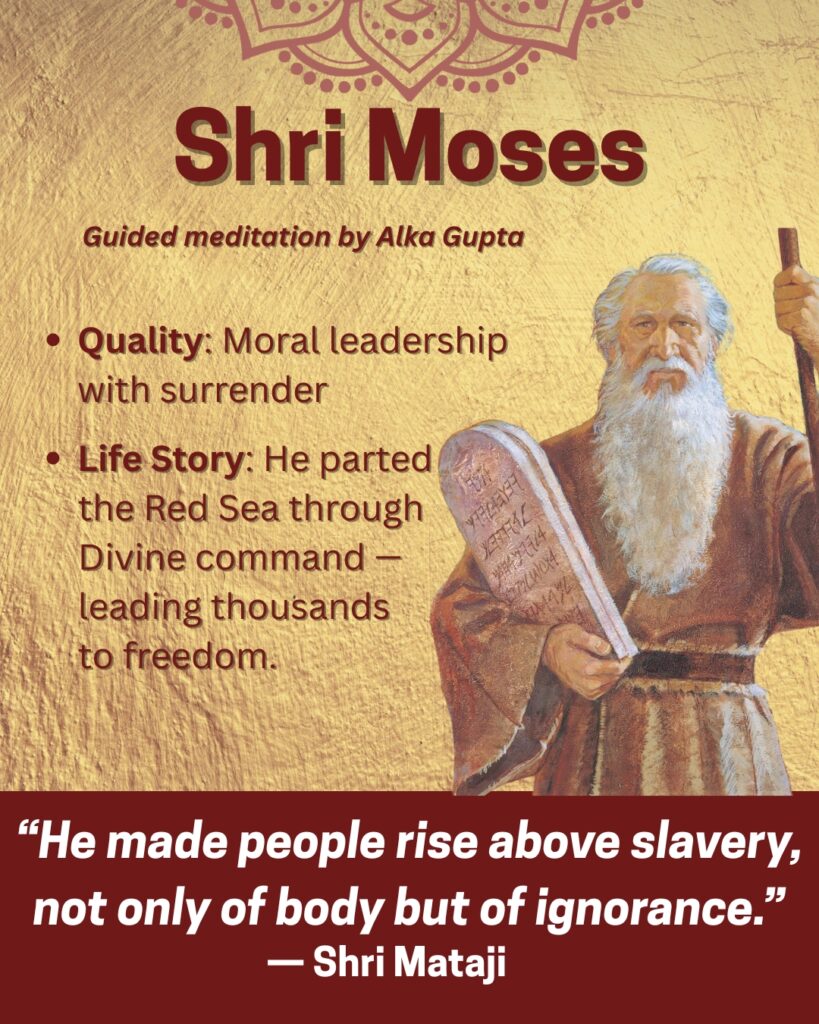
Shri Moses liberated the Israelites and gave the Ten Commandments — moral pillars that shaped civilizations.
Story: At the Red Sea, Moses parted the waters by raising his staff in faith. His surrender brought the collective from slavery to freedom.
Shri Mataji:
“He made people rise above slavery, not only of body but of ignorance. That is why he is a Guru.”
Lessons from Moses:
- Obedience to inner law
- Fearlessness against falsehood
- Collective purity and discipline
- Dharma before convenience
? Shri Zarathustra – The Inner Fire of Righteousness
Region: Ancient Persia | Religion: Zoroastrianism
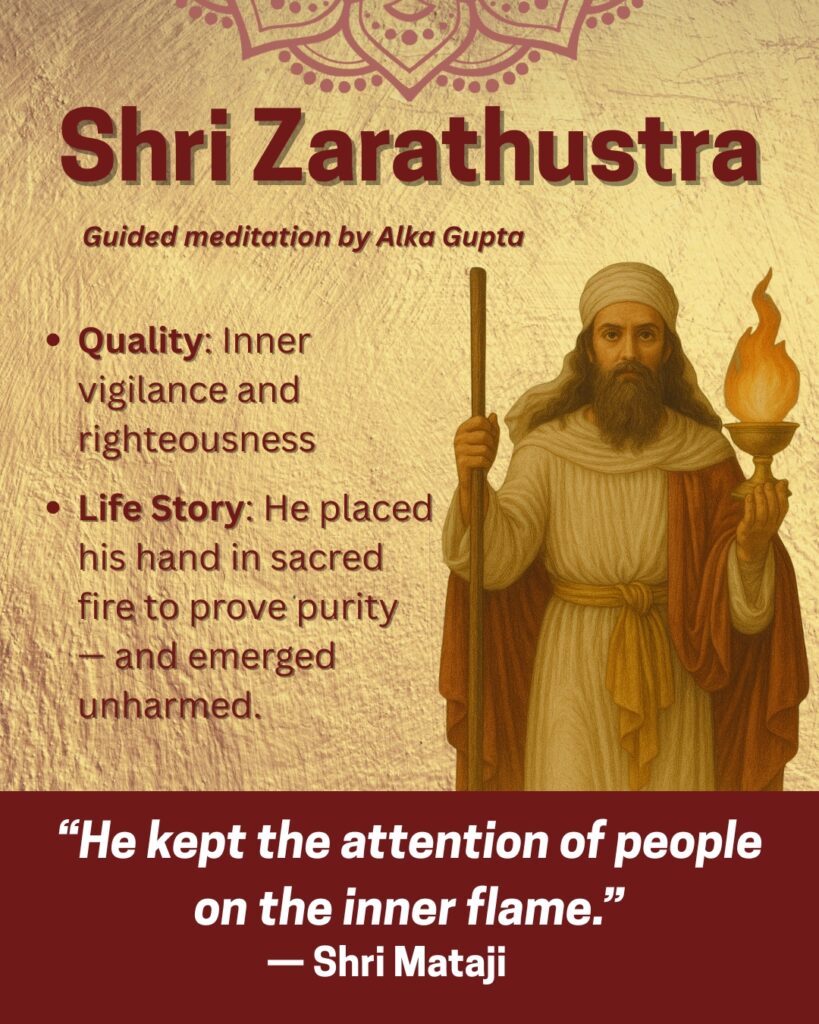
Shri Zarathustra taught the eternal war between truth and falsehood, empowering seekers with purity and self-awareness.
Fire Temple Story: To prove the existence of God, Zarathustra placed his hand in sacred flame — and emerged unburnt, saying, “When you burn with purity from within, outer fire cannot touch you.”
Shri Mataji:
“Zarathustra taught the importance of the inner fire, of fighting evil with awareness.”
Key Lessons:
- Inner vigilance and moral courage
- Self-responsibility
- Worship of Spirit over rituals
- Choosing light over darkness
? Shri Lao Tze – The Sage of the Tao
Region: Ancient China | Teaching: Taoism
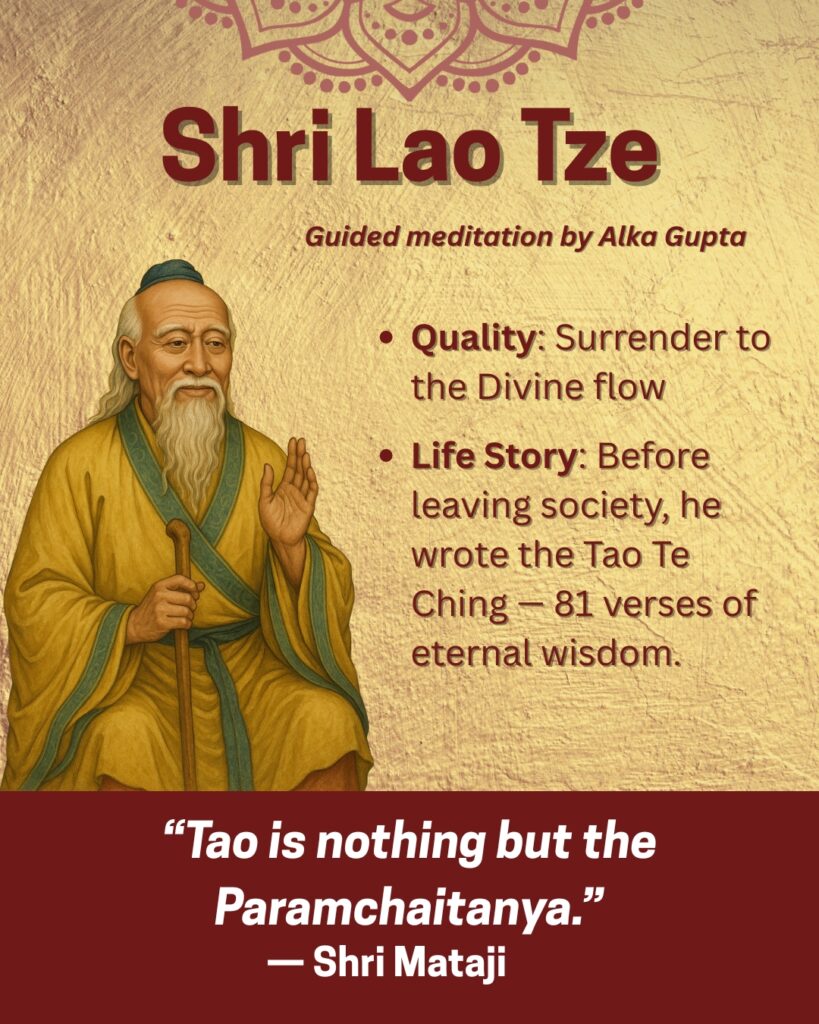
Shri Lao Tze taught about the Tao — the formless, all-pervading Divine, akin to Paramchaitanya in Sahaja Yoga.
Story: Before leaving the world, Lao Tze wrote the Tao Te Ching — 81 verses of timeless wisdom — then disappeared, silently.
Shri Mataji:
“Lao Tze talked about the ‘Tao,’ which is nothing but the Paramchaitanya… beautifully described.”
Sahaja Insights:
- Wu Wei (effortless action)
- Surrender to the flow
- Stillness over struggle
- Softness as real strength
? Shri Confucius – The Teacher of Moral Dharma
Region: China | Known For: Practical righteousness, social harmony
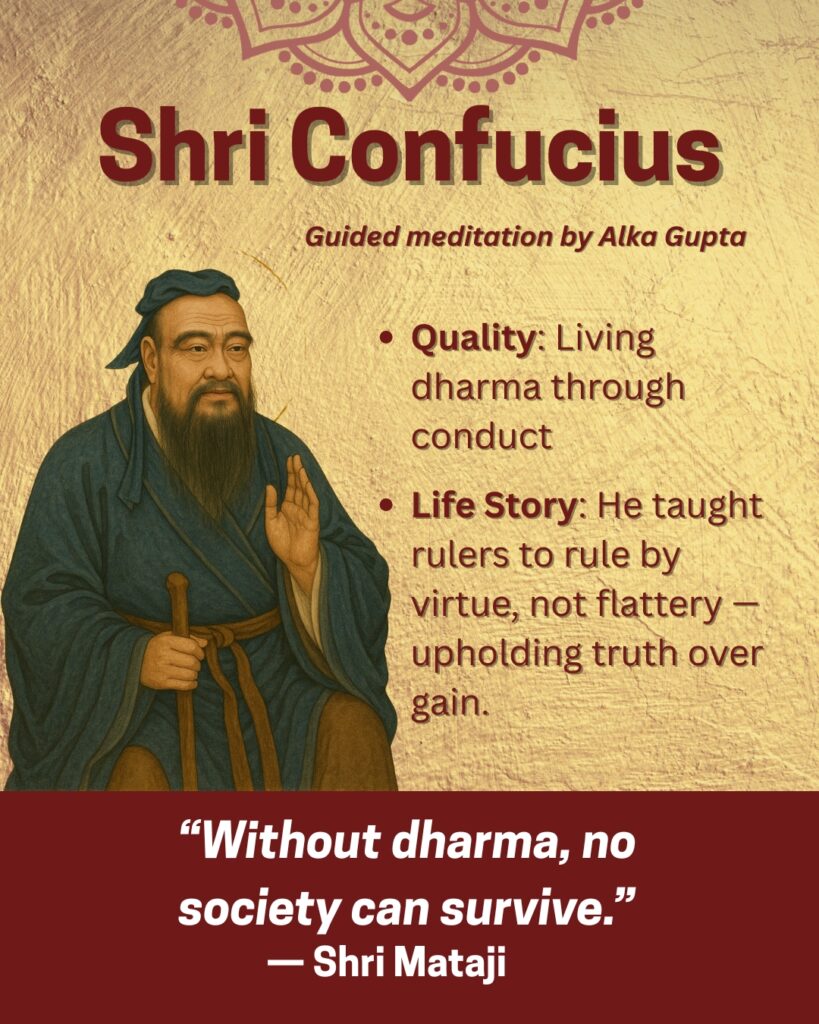
Shri Confucius gave the code of conduct for an orderly, dharmic life — based on respect, family values, and uprightness.
Story: A disciple declined a corrupt king’s offer, saying he would rather speak the truth than flatter authority. Confucius affirmed him as a true disciple.
Shri Mataji:
“He did not talk of God, but of the way you must behave if you believe in God.”
Teachings:
- Discipline in conduct
- Clarity of right vs wrong
- Dharma in family and society
- Leading by example
? Shri Socrates – The Seeker of Inner Truth
Region: Ancient Greece | Method: Self-inquiry
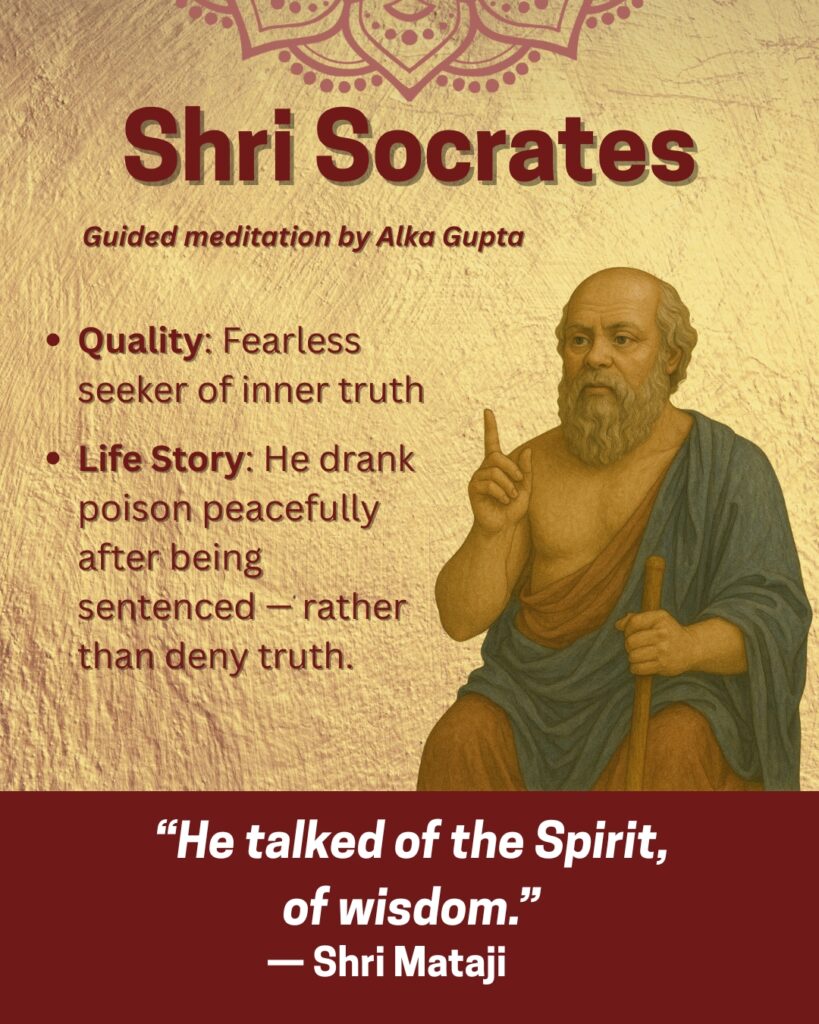
Shri Socrates led through introspection — challenging illusions and asking people to know themselves.
Story: Accused of corrupting the youth, Socrates accepted death without fear, saying, “I am a gadfly sent by God to stir the city to truth.”
Shri Mataji:
“Socrates was a realized soul… He was a Guru who taught people to know themselves.”
Lessons for Yogis:
- Courage to speak the truth
- Self-inquiry as spiritual practice
- Detachment from recognition
- Inner wisdom over outer opinion
? Shri Mohammed Sahib – The Messenger of Surrender
Region: Arabia | Faith: Islam
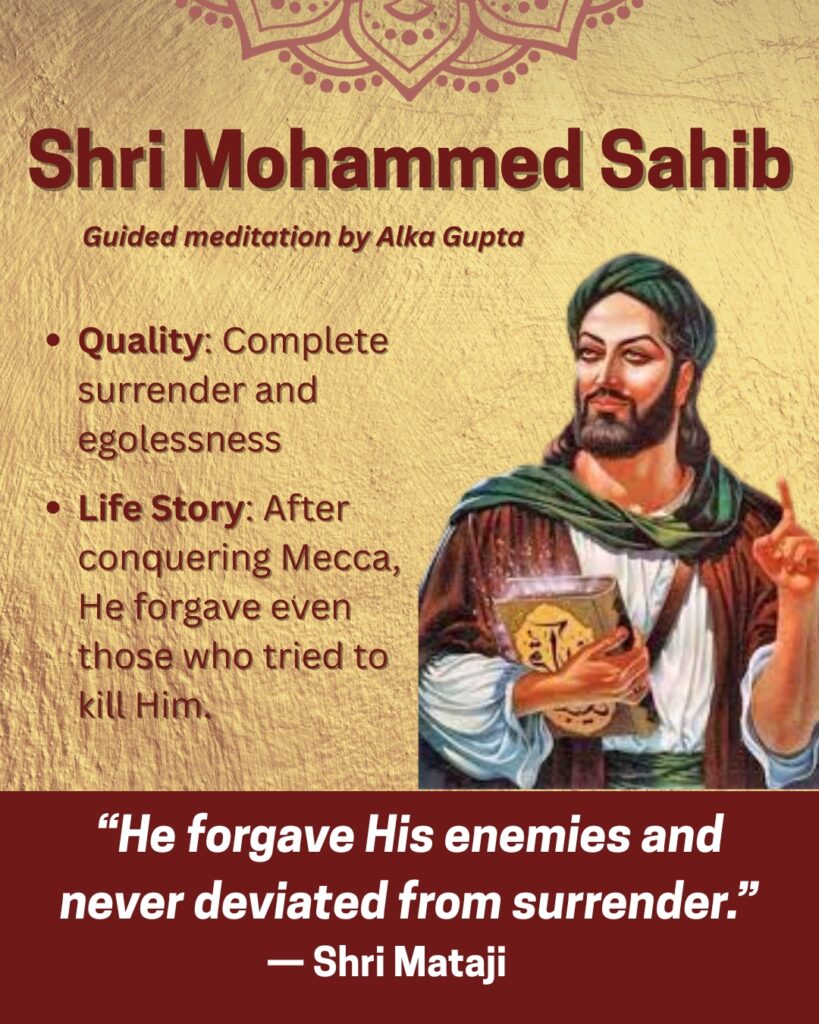
Shri Mohammed Sahib established monotheism and surrendered entirely to the Will of God, uniting a fragmented society under Divine law.
Mecca Story: After victory, he forgave his enemies with the words: “There is no blame on you today.” He restored pure worship by removing all idols from the Kaaba.
Shri Mataji:
“Mohammed Sahib showed that surrender to God means rising above all reactions and becoming the embodiment of love.”
What to Learn:
- Humility and forgiveness
- Detachment from pride and form
- Justice and compassion
- Conduct as dharma
? Shri Guru Nanak Dev Ji – The Ocean of Divine Compassion
Region: Punjab, India | Faith: Sikhism
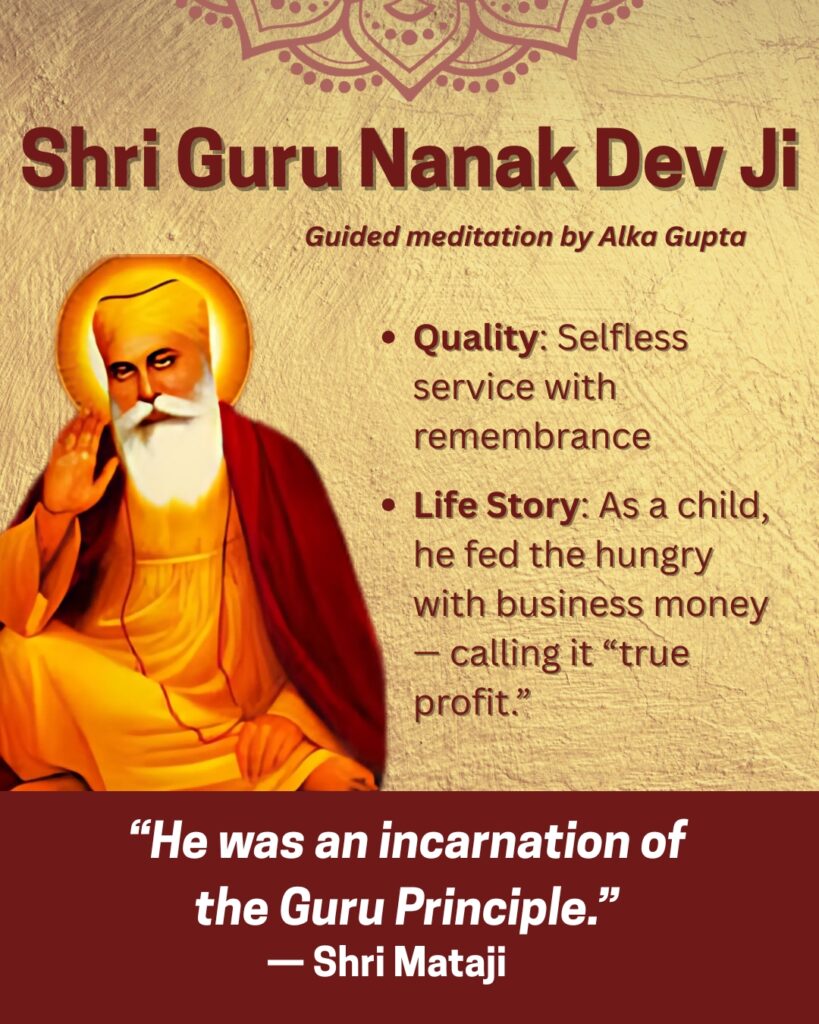
Shri Guru Nanak unified seekers with the message of “Ek Onkar” — One God, formless and all-pervading. He lived in vibrations, not rituals.
Sacha Sauda: He used money for feeding saints instead of trading. This act of true profit inspired the langar system of selfless service in Gurudwaras.
Shri Mataji:
“He was the greatest of teachers, and yet lived like the simplest of men. That is the beauty of a real Guru.”
Qualities:
- Selfless love and service
- Naam and Simran
- Courage in oppression
- Universal unity
? Shri Sai Baba of Shirdi – The Silent Master
Region: Shirdi, Maharashtra | Faith: Beyond religion
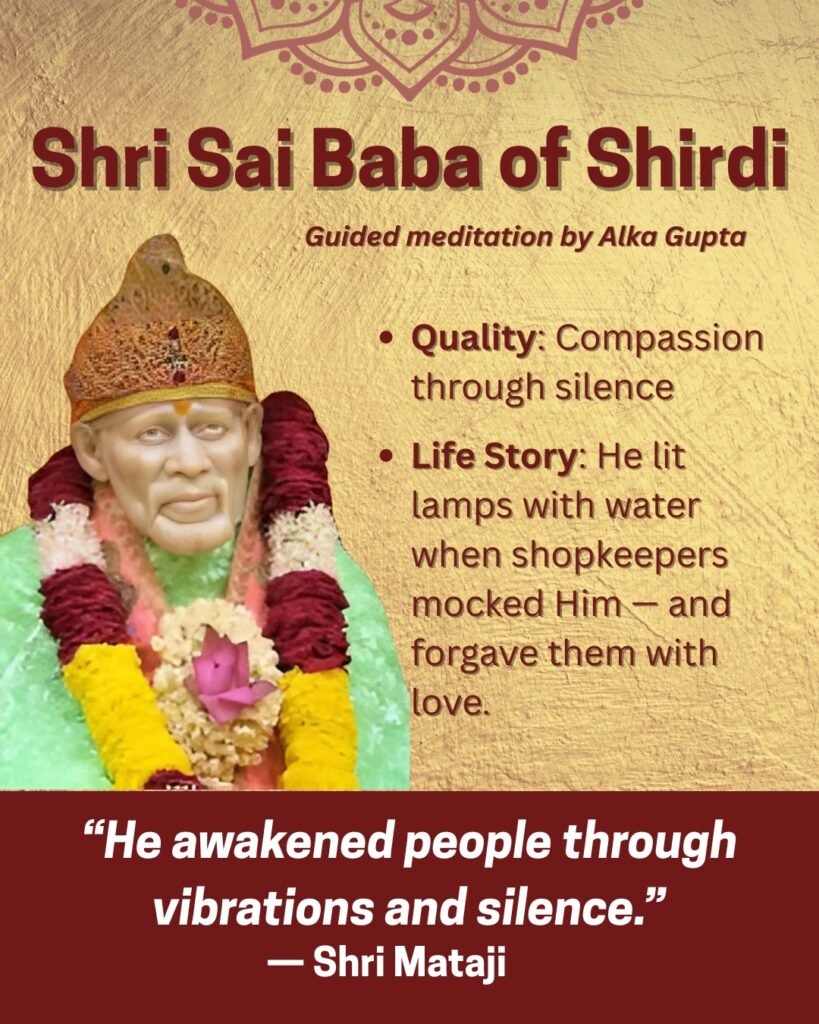
Shri Sai Baba taught through vibrations, silence, and compassion. He never claimed to be Hindu or Muslim, yet his presence united all.
? Miracle: Denied oil, he lit lamps with water to awaken the conscience of mockers. “Speak the truth — it is the greatest dharma,” he said.
Shri Mataji:
“Sai Nath was a true Guru… He never wrote a book, never started a religion, but awakened people through vibrations and silence.”
Lessons for Modern Seekers:
- Total surrender beyond identity
- Equality of all paths
- Power of inner silence
- Correcting through compassion
? Final Reflection: Anchored in the Guru Principle
The Bhavasagara is not just a myth — it’s the ocean of confusion, distraction, and emotional upheaval we face daily. These ten Gurus form the spiritual bridge across it.
As Shri Mataji Nirmala Devi explains:
“These Gurus are seated in the Bhavasagara to guide you, to steady you — and to prepare you for the complete awakening of your Spirit.”
They lead us to the Adi Guru — Shri Mataji Herself — who incarnated to awaken the Kundalini and establish the ultimate path of Kundalini Awakening.
SEARCH THIS SITE
- Work as a Nurse in Jordan – Earn up to ₹85,000/Month | BAFEL Overseas Placement
- Dreaming of a Nursing Career Abroad? Start Your Journey in Qatar.
- Master IELTS with Confidence — Join BAFEL Dwarka’s Morning Batch (8:30 AM – 2:30 PM)
- Spoken English Course | Speak Fluently and Confidently | Morning Batch (8:30 AM – 2:30 PM)
- Enroll in ChatGPT Course in Dwarka Sector 7, Ramphal Chowk – Learn from IIT Delhi Certified Experts!
- Join Alka Didi's online collectivity using these simple steps
- अलका दीदी की ऑनलाइन सामूहिकता में जुडने के लिए यह सिंपल स्टेप्स
- Kya Non-Veg Khana Galat Hai? Spiritual Drishti se Shri Mataji ka Margdarshan
- Corporate Training for Your Employees in India: Why BAFEL Is Every Company’s Growth Partner
- Discover the Ten Primordial Gurus of the Bhavasagara: Guiding Lights in the Ocean of Illusion







